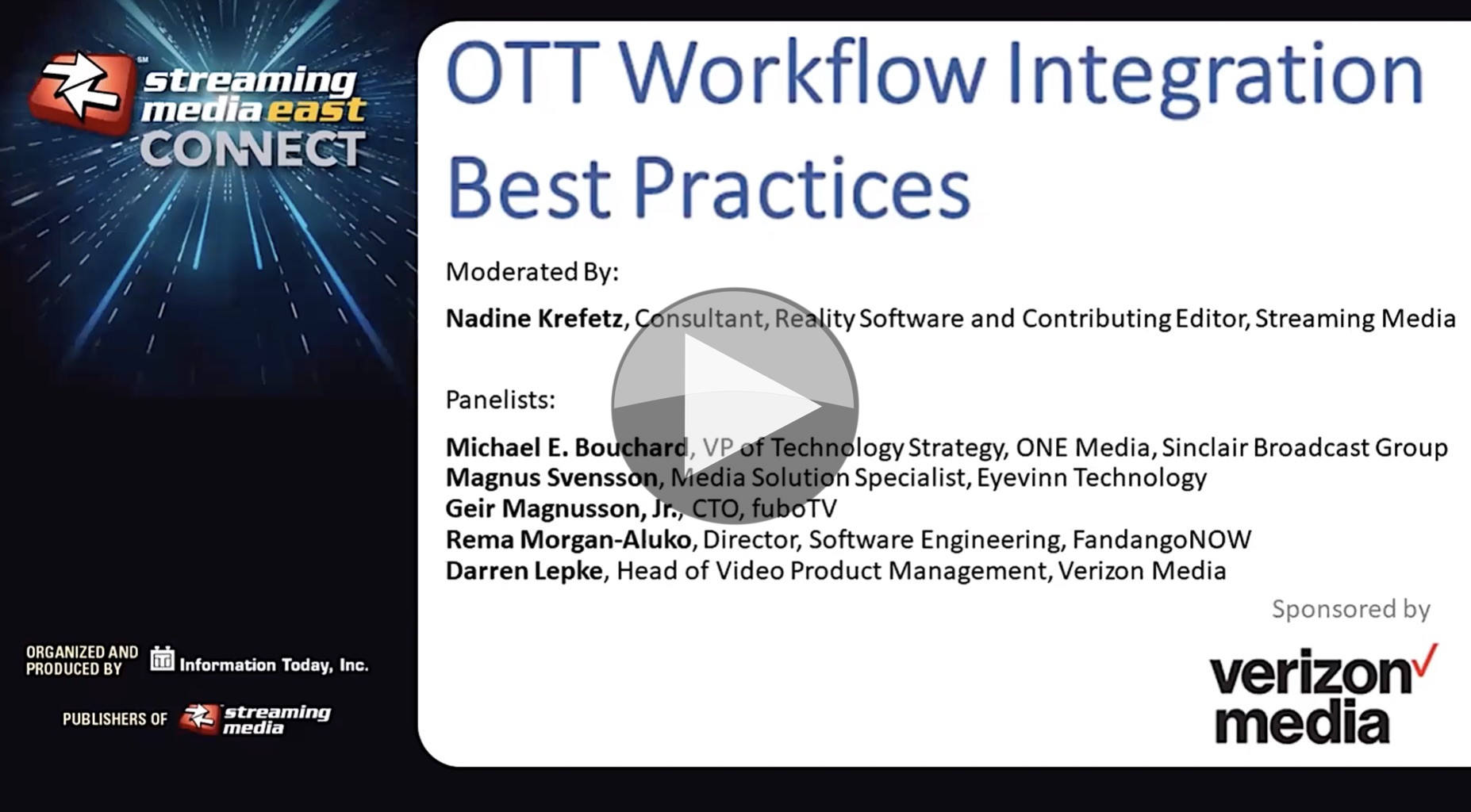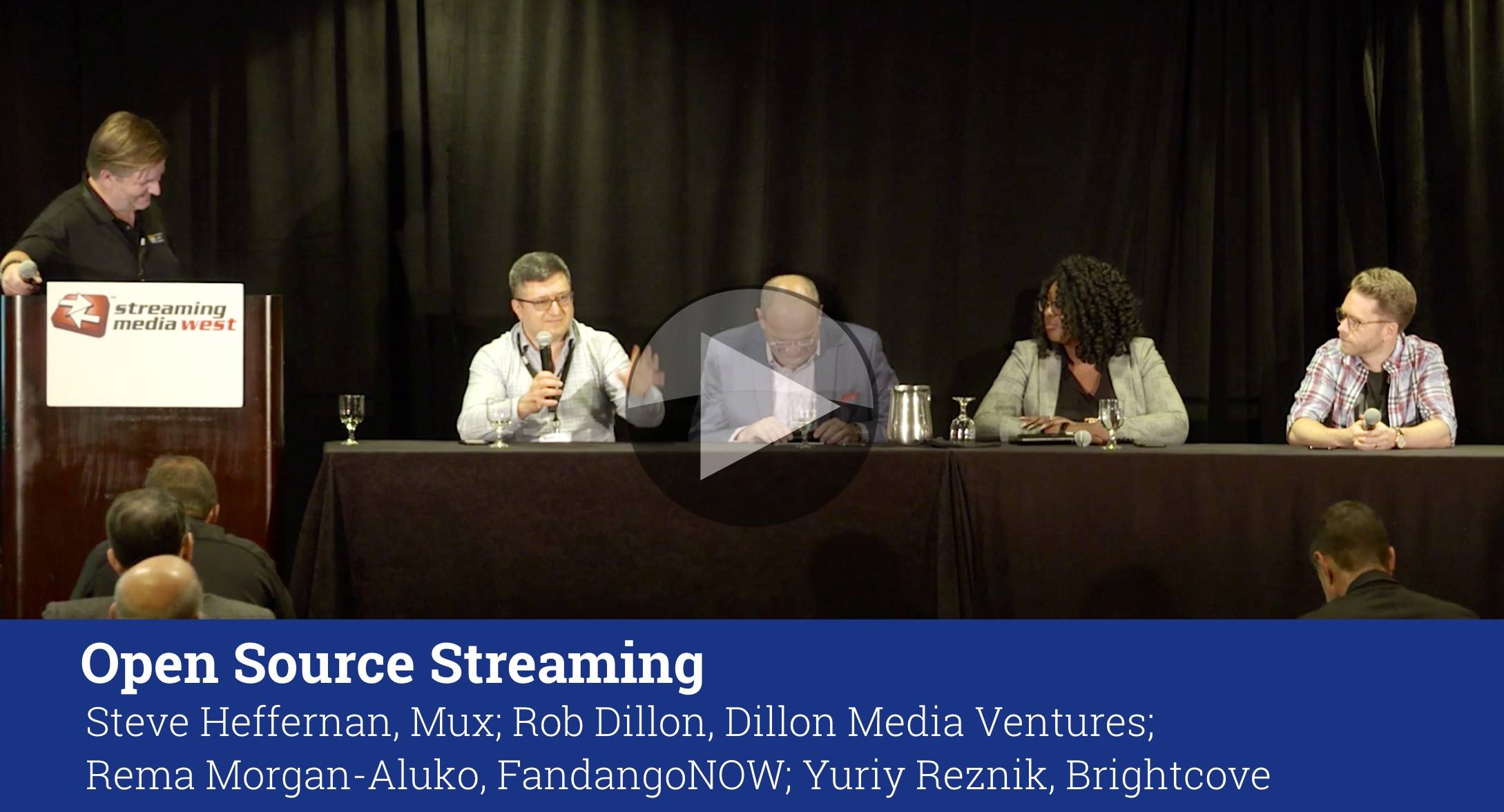Streaming can seem deceptively simple and a simple HLS workflow can be, but to deliver a monetised service to a wide range of devices, with a mix of live and on-demand assets, with advertising and DRM where needed is far from trivial. In this video, we hear from several companies on how they manage the complexity which allows their service to thrive.
Nadine Krefetz from streaming media asks the questions as we hear from Sinclair, Eyevinn Technology, fuboTV, FandangoNOW and Verizon Media. Firstly they introduce us to their services and the types of workflows that they are maintaining day in, day out.
Companies like Sinclair are frequently adding new channels through market acquisitions. Those companies that don’t grow through acquisition will, similarly, find themselves looking at their own legacy workflows as they look to modernise and improve their offering. Our panel gives their thoughts on tackling this situation. Magnus Svensson and Michael E. Bouchard both talk about having a blueprint, in essence, a generic workflow which contains all the functional blocks needed for a streaming service. You can then map the old and new workflows to the blueprint and plan migration and integration points around that.
The panel covers questions about how smaller services can address Roku and Amazon Fire devices, what to ask when launching a new service and which parts of their services would they never want to buy in or outsource.
Ad insertion is a topic which is essential and complex. Server-Side Ad Insertion (SSAI) is seen as an essential technology for many services as it provides protection against adblockers and can offer more tight management of how and when viewers see ads. But the panel has seen that ad revenues are lower for SSAI since there are fewer analytics data points returned although VAST 4.0 is addressing this problem. This has led to one of the panel members going back to client-side ads for some of their workflows simply due to revenue. Magnus Svensson points out that preparation is key for advertising: Ensuring all adverts are in the correct formats and have the right markers, having slides ready and pre-loading to reduce peaks during live transmissions.
The panel closes looking at their biggest challenges, often in adapting to the pandemic, and the ever-evolving landscape of transport formats.
Watch now!
Speakers
 |
Michael E. Bouchard Vice President of Technology Strategy, ONE Media, Sinclair Broadcast Group |
 |
Magnus Svensson Media Solution Specialist, Eyevinn Technology |
 |
Geir Magnusson Jr. CTO fuboTV |
 |
Rema Morgan-Aluko Director, Software Engineering, FandangoNOW |
 |
Darren Lepke Head of Video Product Management, Verizon Media |
 |
Nadine Krefetz Consultant, Reality Software Contributing Editor, Streaming Media |








